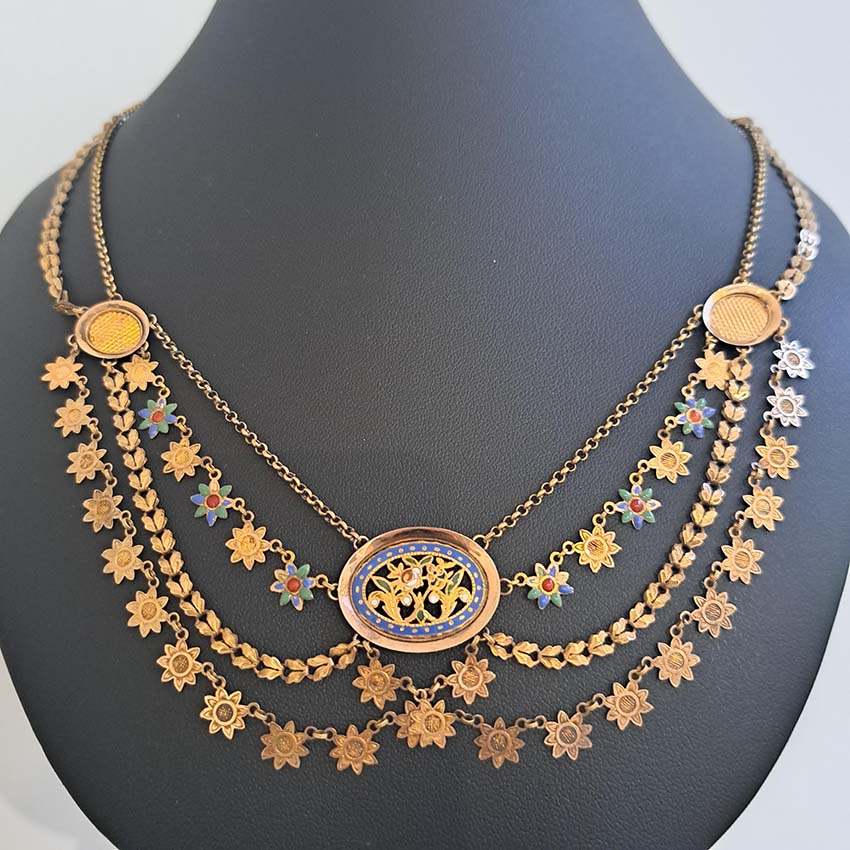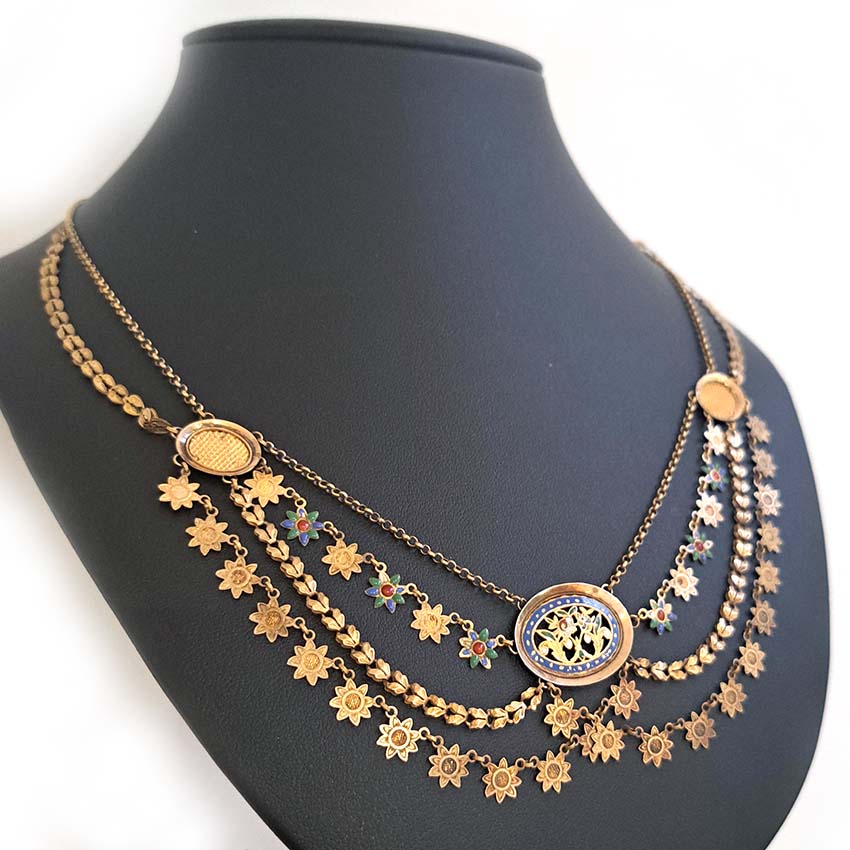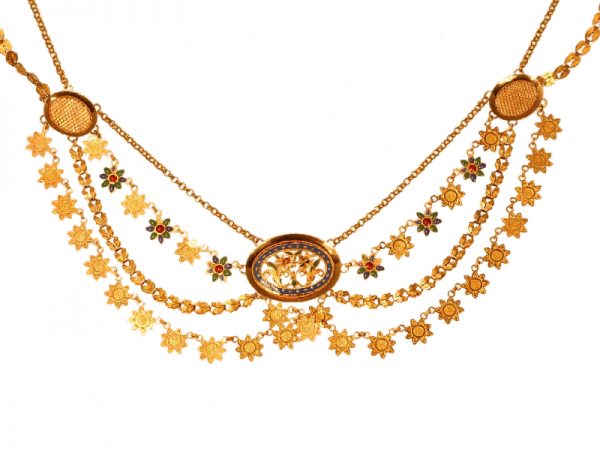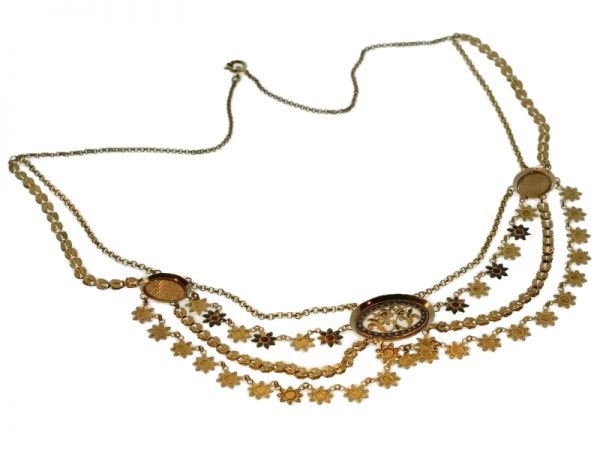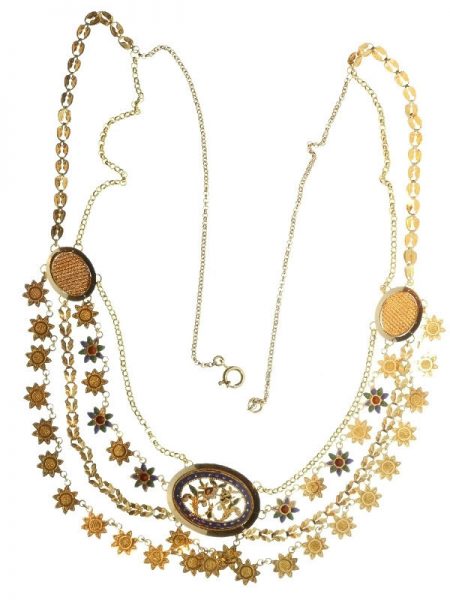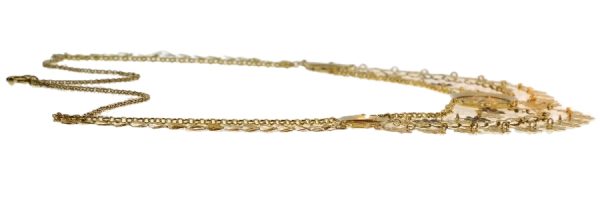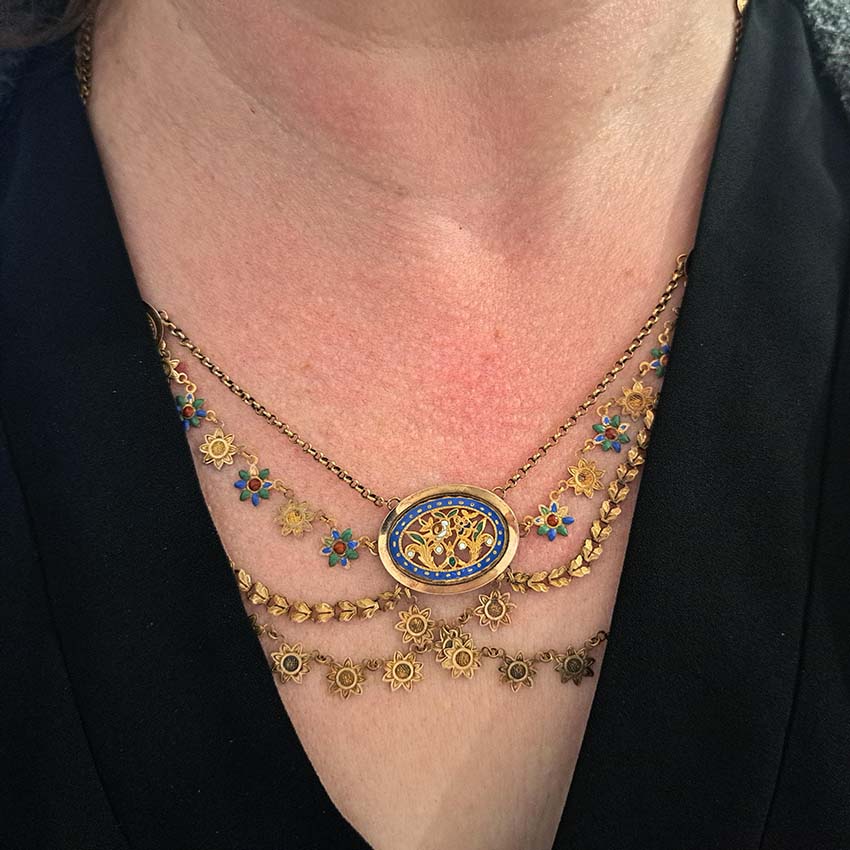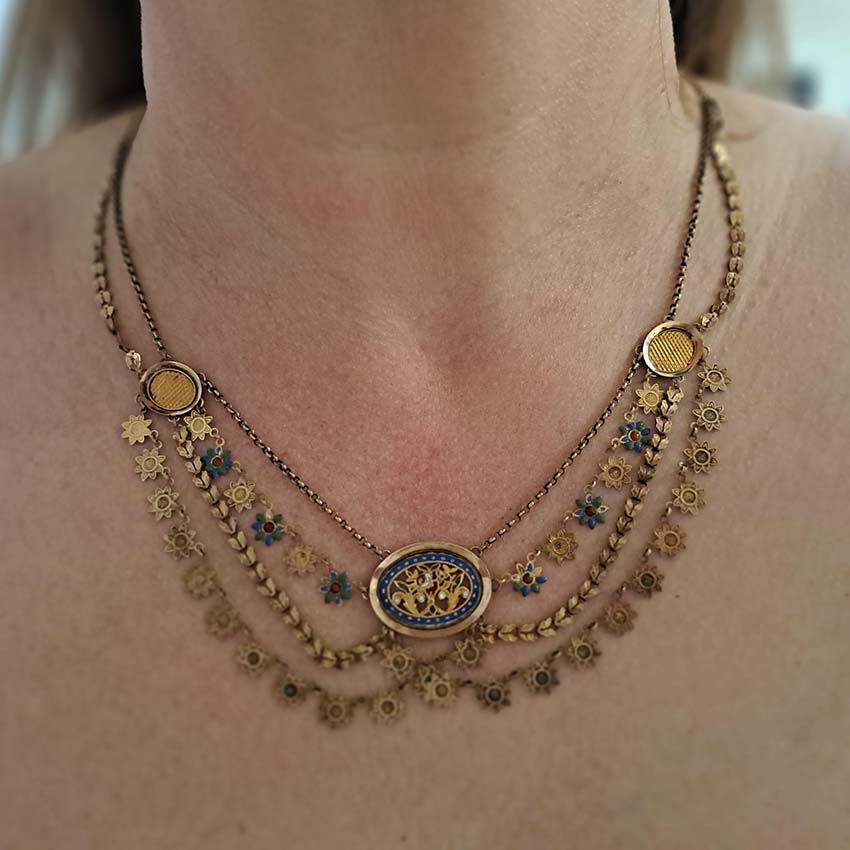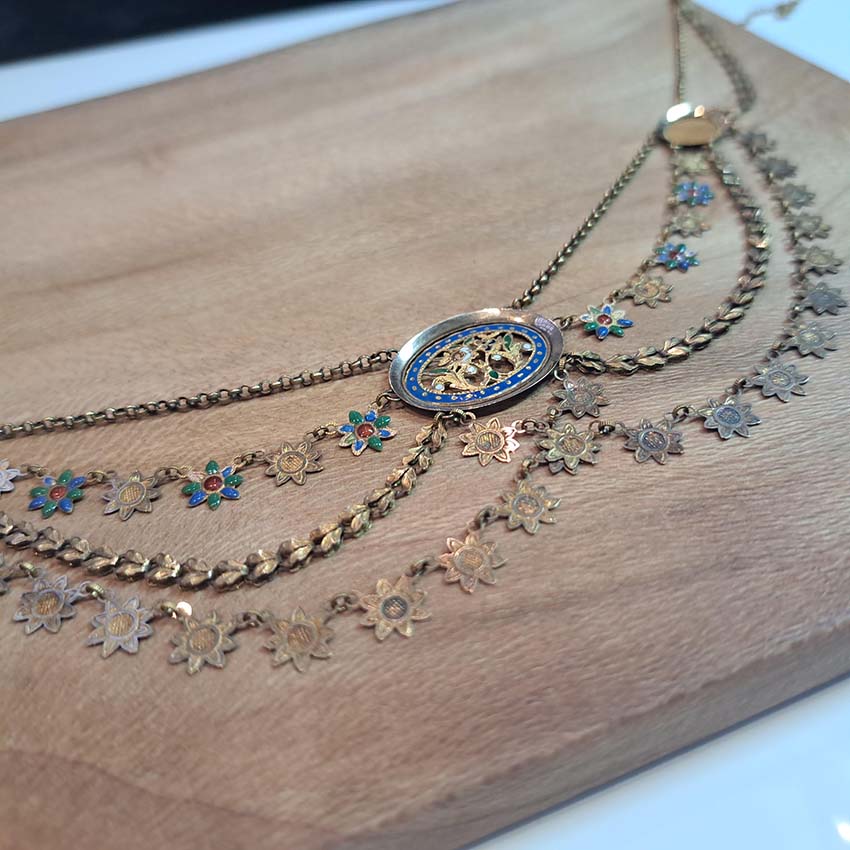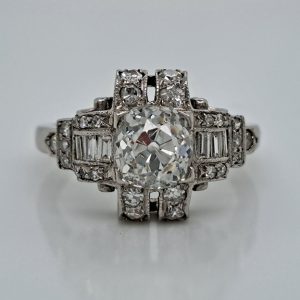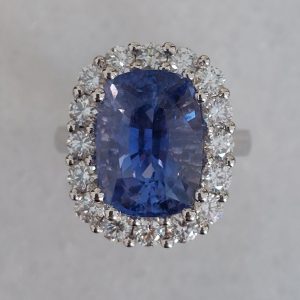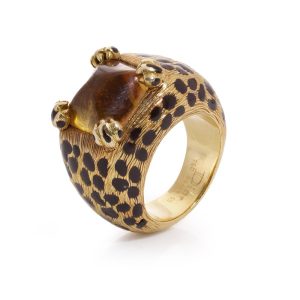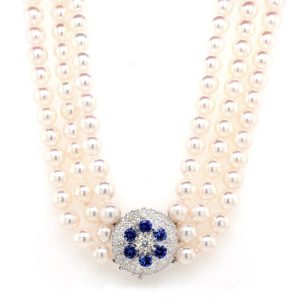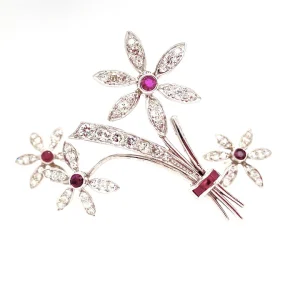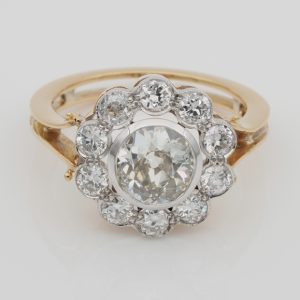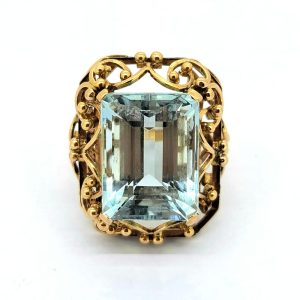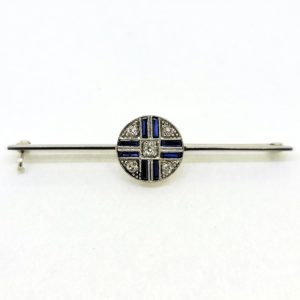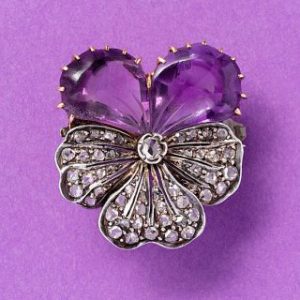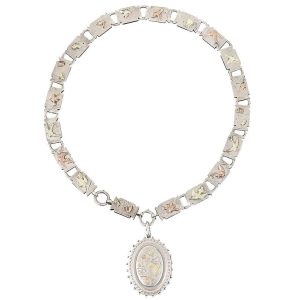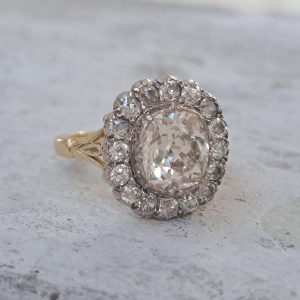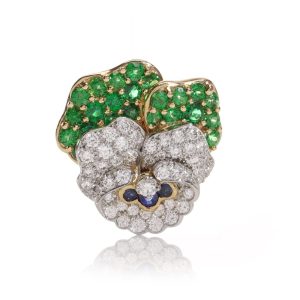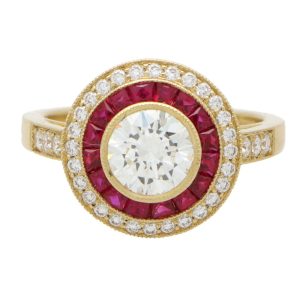Antique Georgian French Enamelled Gold Collar Necklace
Antique Georgian French Enamelled Gold Collar Necklace
Condition: excellent condition
Country of origin: France
Period: ca. 1810
Material: 18ct bi-colour (yellow and red) gold
The type of enamelling is typical for the city Bresse in France, hence the name Bresse Enamel.
Extra information: Collier d’esclavage- Esclavage is French and literally it means slavery. We’ll leave it to your imagination to give an interpretation to this naming. It is a type of necklace composed of three or more chains or strings of beads or jewels in which the chains or strings hang approximately equidistant from each other. They were worn in Normandy as peasant jewellery in the mid-18th century. Such jewels were in many regions of France the most beautiful jewel offered by the bridegroom to his bride the day of their wedding. The definition of ‘collier esclavage’ appears for the first time in the ‘Dictionnaire de Trévoux’ in 1752. This necklace knows a very large geographical diffusion. In Normandy, the gold pieces were often engraved. A collier d’esclave is an extremely rare article to find and we are proud to be able to offer one here.
Hallmarks: The French hallmark depicting a rooster’s head which was used in France for 18ct gold around 1810.
Dimensions: length 51.00 cm (20,08 inch) cm
Weight: 13.90 gram (8,94 dwt)
Product SKU
JDAD-15128-0176
£4,450
1 in stock
Antique Georgian French Enamelled Gold Collar Necklace
Price: £4,450 | Product SKU: JDAD-15128-0176
Please use the form below to enquire about this item. Alternatively you can call us directly on 020 7438 2046 or email us at [email protected].

